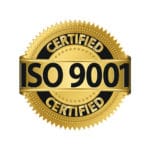What is trademark registration?
A trademark is a unique sign or visual symbol that represents a business identity and differentiates it from other businesses. Trademark can be in any form, like brand name, logo, tagline, or even the name of your business. It can also be the combination of words, color, number, or letters.
Examples of the trademark are Pepsi, Dominos, Cadbury, etc.
Trademarks in India are registered under the trademark Act, 1999. An individual or organization can apply for trademark registration for both goods and services. There are 45 classes of the trademark. You need to select the appropriate class for trademark registration, depending upon your product’s nature.
Benefits of trademark registration
- It helps to generate goodwill for the business.
- It helps in restricting others from using your trademark and hence protects from destroying your image.
- It enhances loyalty and stimulates further sales/purchases.
- Trademark owner gets legal protection, i.e., the power to sue for the infringement losses.
- It helps in the creation of an intangible asset that can be traded, franchised, or commercially contracted and promotes commercial goodwill.
Who can apply for the trademark registration?
Any individual running a business may apply for the trademark registration, including
- Private limited company
- Public limited company
- Partnership firms
- Limited liability partnership
- One person company
- NGOs, trusts, etc.
Note: the trademark registration fees vary from type of business structure.
Types of trademarks – things that can be registered as a trademark
Intellectual property rights (IPR) allow businesses to register the trademark in various forms, such as
- Business name
- Logo of the company
- Tagline or punchline
- Brand of the company
- Sound mark in audio format
Trademark registration fees in India
The trademark registration fees in India vary based on the type of organization. Further, if you want to file an application for multiple classes, separate trademark registration fees shall be applicable.
Here is the government fee for trademark registration:
TM Form | Trademark Process | Physical Filing (In Rs.) | Online Filing (In RS.) |
TM-A: Application for Registration of a Trademark | Where the applicant is an Individual / HUF/ Start-Up/Small enterprise – MSME | 5,000 | 4,500 |
In all other applicants such as LLP/companies, etc. | 10,000 | 9,000 |
TM-O: Notice of Opposition | In case you receive a notice of opposition from the trademark registry or application for rectification of the register | 3,000 | 2,700 |
TM-R: Renewal of Registration | For renewal of registration of a trademark | 10,000 | 9,000 |
TM-C: Search and issue of certificate | Request for search and issue of certificate | 10,000 | 9,000 |
Note: the trademark registration fees and the applicable forms can be accessed at https://ipindia.gov.in/form-and-fees-tm.htm
Documents required for trademark filing
You must have the following document or details for filing a trademark application in India:
- Trademark sign or logo copy to be registered.
- Goods or services to register.
- Nature of business, i.e., activities you will do under that brand name.
- Date of use (if already using then since date or future use date).
- Power of attorney with the applicant’s signature.
Process of Trademark registration in India
Step 1: Trademark search:
The first step is to check the availability of the brand name. It should not be already taken or similar to the existing business’s trademark. Choosing a unique trademark name gives protection from any objection being raised in the future. Therefore, ensure that they have not been already registered or pending to register.
Step 2: Filing trademark application:
Once you have checked the chosen trademark name or available design, you need to file a trademark application at https://ipindia.gov.in/. The trademark attorney drafts the trademark application and submits it online.
The applicant needs to submit the application along with the trademark registration fees. In addition, an affidavit on non-judicial stamp paper, which is further notarized, is also required to be submitted.
After filing an application, you can start using the “TM” symbol.
Step 3: Trademark examination:
The trademark examiner examines your application to check if it is eligible for registration or not. After that, you can find the examination report at https://ipindia.gov.in/ and the observation report, if any.
Step 4: Trademark registration:
After examination, when the trademark examiner is satisfied with the trademark eligibility, the trademark is published in the journal. Further, the trademark registration gets open for the opposition.
But if there is no objection raised by any opposition party, then your trademark will be registered. The applicant will also receive a certificate of registration.
Once the trademark is registered, you may use ® (registered symbol) along with the trademark.
Trademark renewal
The trademark registration remains valid for 10 years from the filing date. The applicant can renew the trademark registration. Just like the trademark registration fees, the applicant needs to pay the trademark renewal registration fees. The trademark renewal application must be filed before the expiry of the due period to avoid any chances of litigation.
Conclusion
So, if you own a business or planning to start your business, it is a good idea to apply for trademark registration. It will protect your business, efforts, costs, and time. A trademark registration gives protection from legal issues and provides benefits to scale your business with a loyalty badge.




